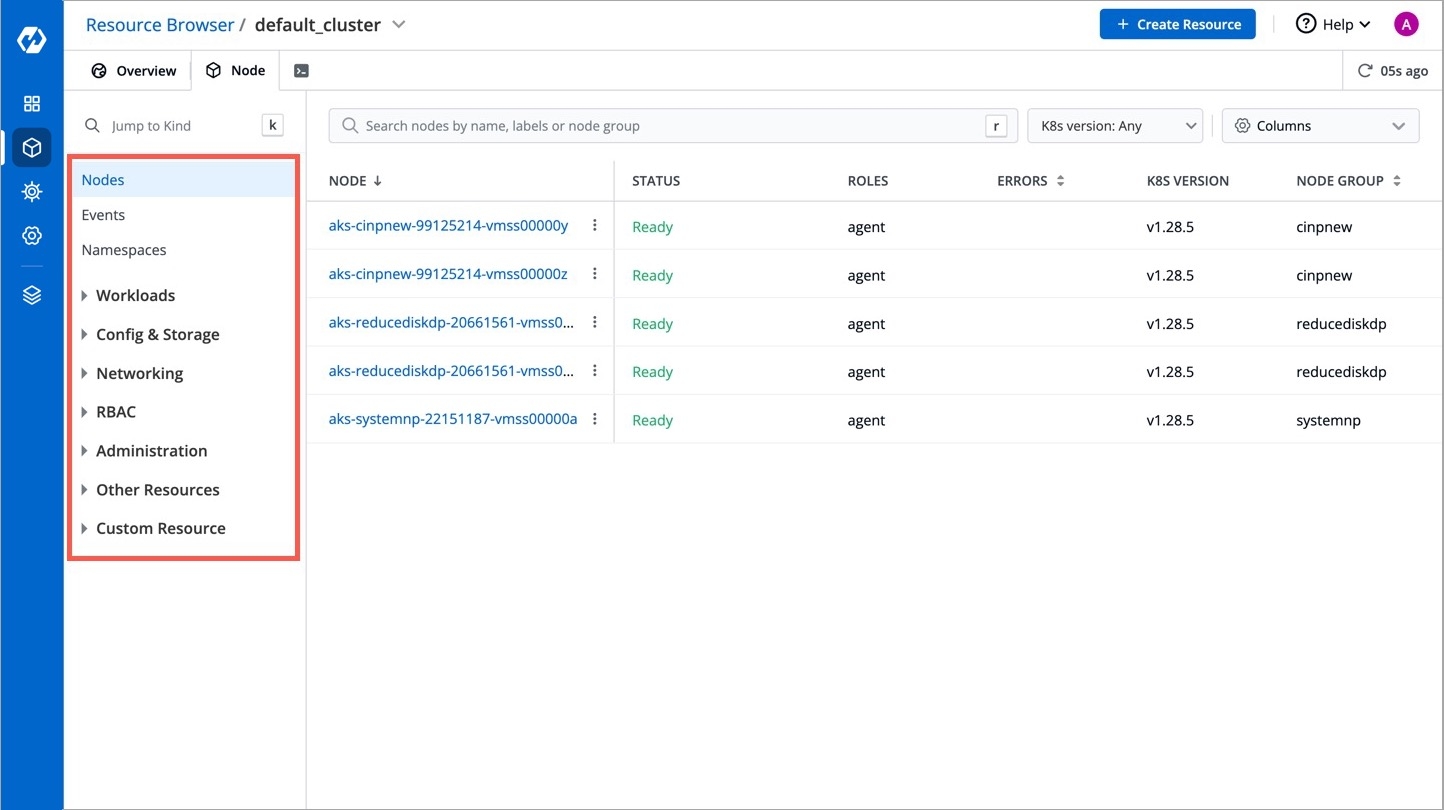Resource Browser
Introduction
The Devtron Resource Browser provides you a central interface to view and manage all your Kubernetes objects across clusters. It helps you perform key actions like viewing logs, editing live manifests, and even creating/deleting resources directly from the user interface. This is especially useful for troubleshooting purposes as it supports multi-cluster too.
Additional References
First, the Resource Browser shows you a list of clusters added to your Devtron setup. By default, it displays a cluster named 'default_cluster' after the initial setup is successful.

In the image above, you can see a visual display of the health status for all clusters connected to Devtron. If any node within a cluster encounters an issue and is not ready, it will be highlighted in red, allowing you to quickly address the problem.
If you are a superadmin, you can connect more clusters by clicking the Add Cluster button located at the top of the browser. This will take you to the Clusters & Environments page within Global Configurations.
You may click a cluster to view and manage all its resources as shown below.

Sections
Last updated
Was this helpful?

